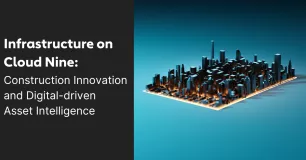
Smart Cities Council Partner Senet operates the largest and most densely deployed public carrier-grade LoRaWAN network in the United States, utilized in over 29 states, covering over 1,300 cities, serving a population of over 55 million people, and processing millions of transactions daily.
Download Senet's latest whitepaper: The Value of Carrier-Grade Network Service for the Delivery of LoRaWAN IoT Solutions or visit Senet to learn about Senet’s LoRaWaN networks for Smart City solutions.
Transforming Municipal Operations and Services with
LoRaWAN Networks and Sensors
Like many industries and organizations, municipalities have the opportunity to transform their operations and service delivery by making smart technology investments. By using digital intelligence derived from network connected sensors and devices, municipalities are able to improve operational efficiencies, provide better services, engage in sustainable practices, and ultimately achieve a higher quality of life for its citizens.
But before a city can be “smart”, it has to be connected. At the core of this evolution must be a secure, efficient and affordable network and information technology infrastructure. Investing in the right network connectivity to support the broadest range of applications is key to long-term success. Forward thinking cities are addressing these challenges by selecting communication infrastructures with extreme flexibility - those that offer the most utility across a broad set of use cases and that have been designed from the ground up to support the billions of devices projected to be connected to the Internet of Things.
While consumer IoT applications primarily utilize Bluetooth or Wi-Fi in short-range communication, many Smart City IoT applications require long-range network connectivity involving cellular or Low Power Wide Area Networks (LPWAN) – or a combination of the two. Cellular connectivity includes different generations of networks, including 2G, 3G and 4G, and new cellular technologies such as 5G, Cat-1, LTE-M and NB- IoT. Cellular however, provides range and bandwidth at the expense of power consumption. It can transmit large amounts of data over long distances frequently, but also drains device battery power rapidly. As a result, cellular connectivity is usually reserved for real-time applications such as emergency response and video surveillance, or for traditional personal communication.
To increase range while maintaining low power consumption, LPWANs are extremely useful for the majority of Smart City use cases because they often require only small data transfers at infrequent intervals. With an open LPWAN technology such as LoRaWAN®, sensor-enabled devices can send data over miles, yet batteries can last over ten years instead of weeks or months.
This type of network makes it possible to have hundreds of thousands or millions of sensors/devices collecting and sending data at a lower cost, over a longer range and with significantly extended battery life as compared to other connectivity options.
As municipalities explore opportunities to deliver city-wide IoT services, they are in a unique position to partner with early adopters of LoRaWAN technology to deploy and manage smart city solutions on a common and secure network architecture. For example, partnering with water utilities who are deploying dense LoRaWAN networks for AMI today, provides a unique opportunity to create a shared network infrastructure capable of supporting a wide range of commercial and citizen-facing applications.
Easy LoRaWAN gateway deployment and cloud-based network management from LoRaWAN network operators like Senet, allow for multi-service utilities (water, gas, electric) to deploy applications at a low cost and in a collaborative fashion. Beyond utility metering and infrastructure monitoring, municipalities can rapidly deploy solutions for environmental monitoring, building management, smart parking, lighting, waste management, asset tracking, pest management, public safety, and more - extending the value of the LoRaWAN network across municipal departments and facilitating public-private technology partnerships that have previously not been feasible.
Download Senet's latest whitepaper: The Value of Carrier-Grade Network Service for the Delivery of LoRaWAN IoT Solutions or visit Senet to learn about Senet’s LoRaWaN networks for Smart City solutions.



